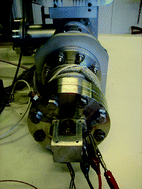In situ identification of dimethyl diselenide in hepatocytes treated with methylseleninic acid by membrane inlet mass spectrometry
Abstract
The advantages and drawbacks of

- This article is part of the themed collection: 2009 European Winter Conference on Plasma Spectrochemistry, Graz, Austria

 Please wait while we load your content...
Please wait while we load your content...